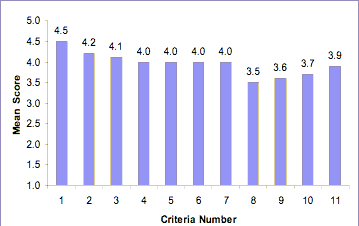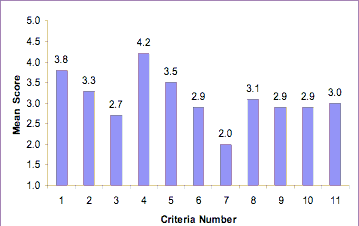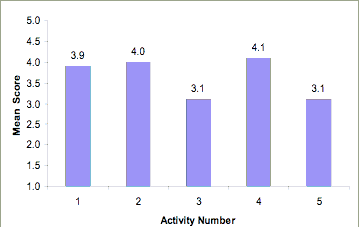May 14-15, 2005. Tokyo, Japan: Tokyo Keizai University.
by Richard Blight (Ehime University)
|
|
Keywords: evaluation system, communicative learning, ESOL classroom activities |
by Richard Blight (Ehime University)
|
|
Keywords: evaluation system, communicative learning, ESOL classroom activities |
[ p. 21 ]
[ p. 22 ]
| "The first stage in developing an evaluation system is to determine a set of criteria which serve to relate the teaching objectives to the learning outcomes occurring in classroom situations . . ." |
| No. | Evaluation Criteria |
| C1 | Clear learning objective |
| C2 | learning purpose is useful / beneficial |
| C3 | involves meaningful communication |
| C4 | provides practise / repetition of target language forms |
| C5 | level of learner activation / active participation |
| C6 | motivation factor / interesting, enjoyable |
| C7 | personalization / personal experiences, opinions, feelings |
| C8 | appropriate learning challenge / tension |
| C9 | volume of language production |
| C10 | appropriate difficulty level |
| C11 | appropriate pace / rate of progression |
[ p. 23 ]
[ p. 24 ]

[ p. 25 ]

[ p. 26 ]
Summary results
| "While the formulation of the criteria and the results may differ between learning contexts, the evaluation process demonstrated in this paper remains fundamentally unchanged." |
[ p. 27 ]